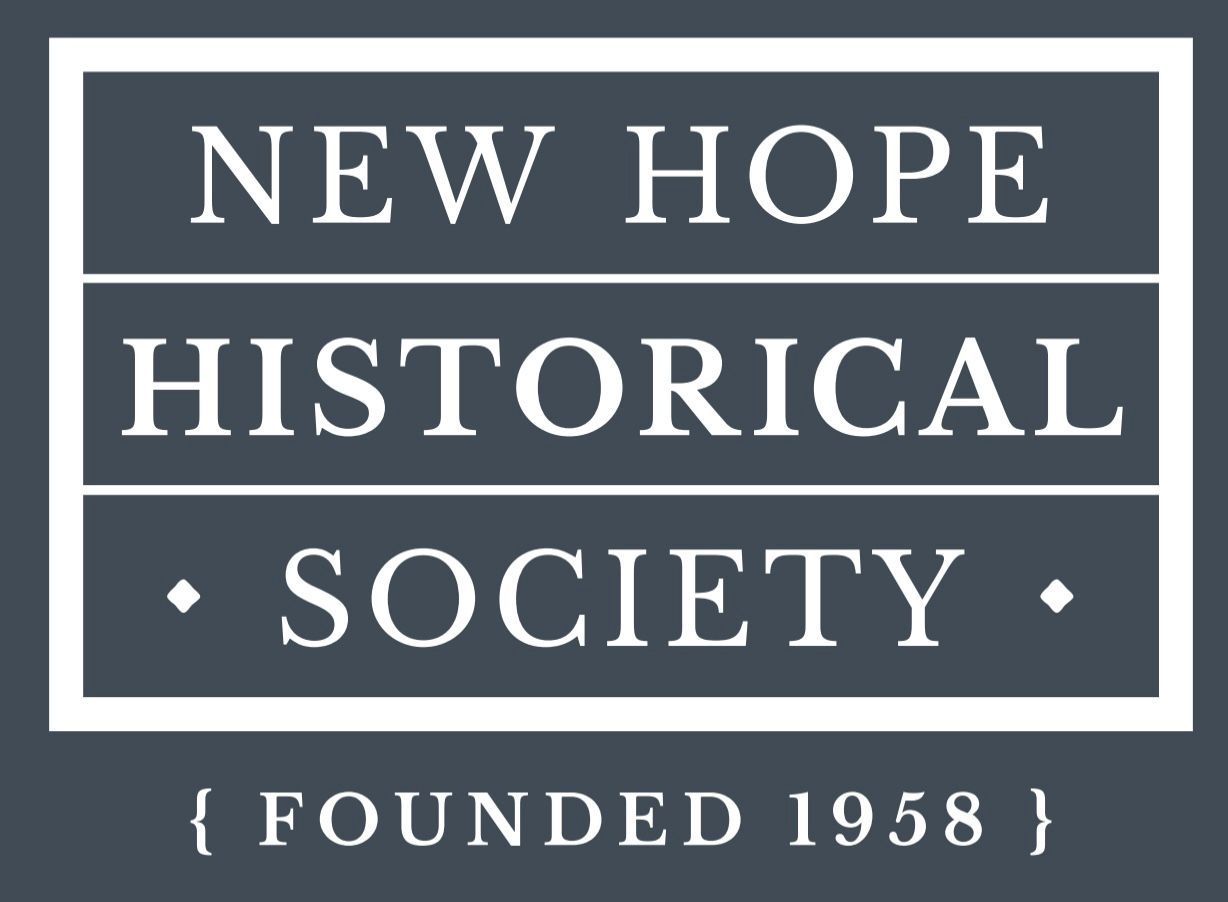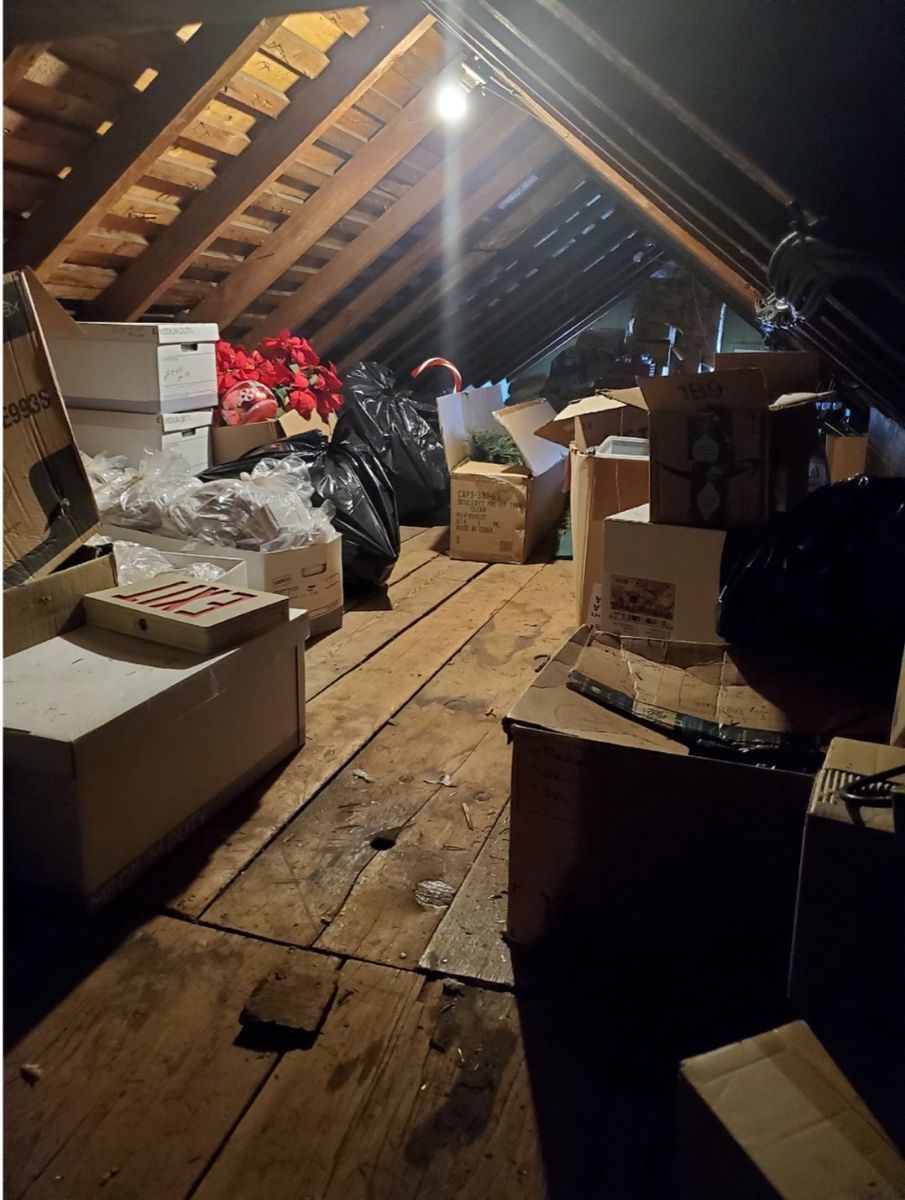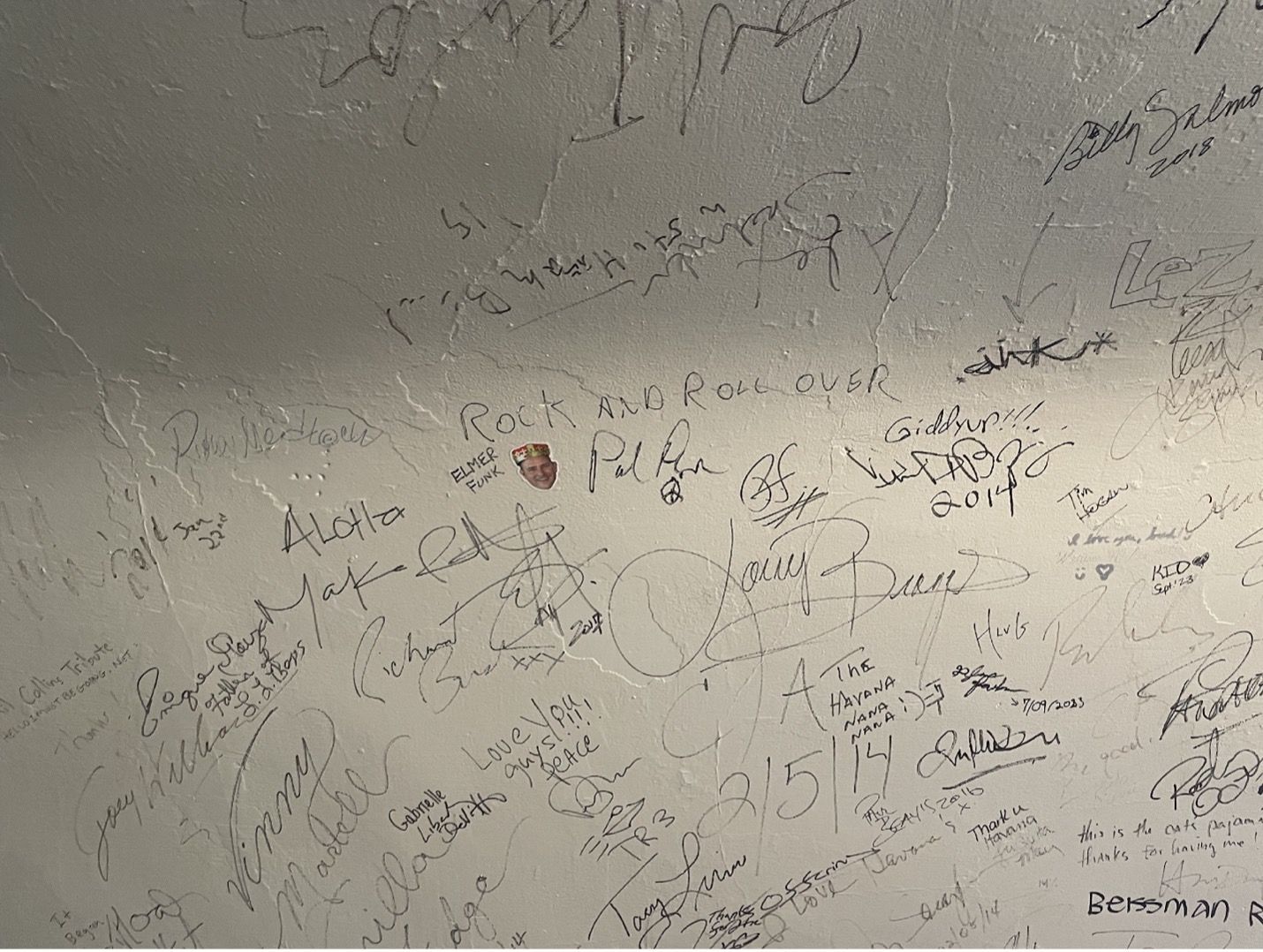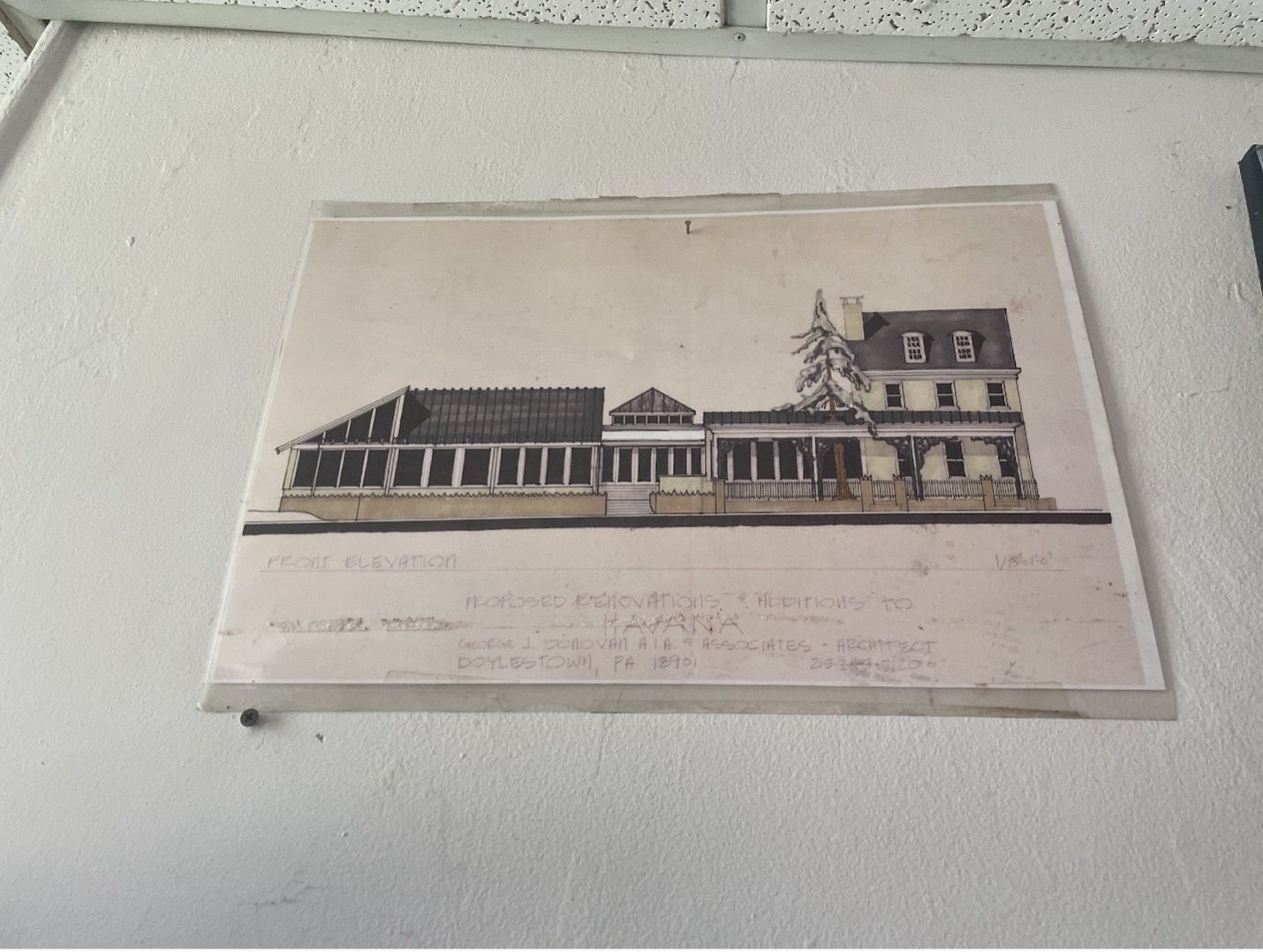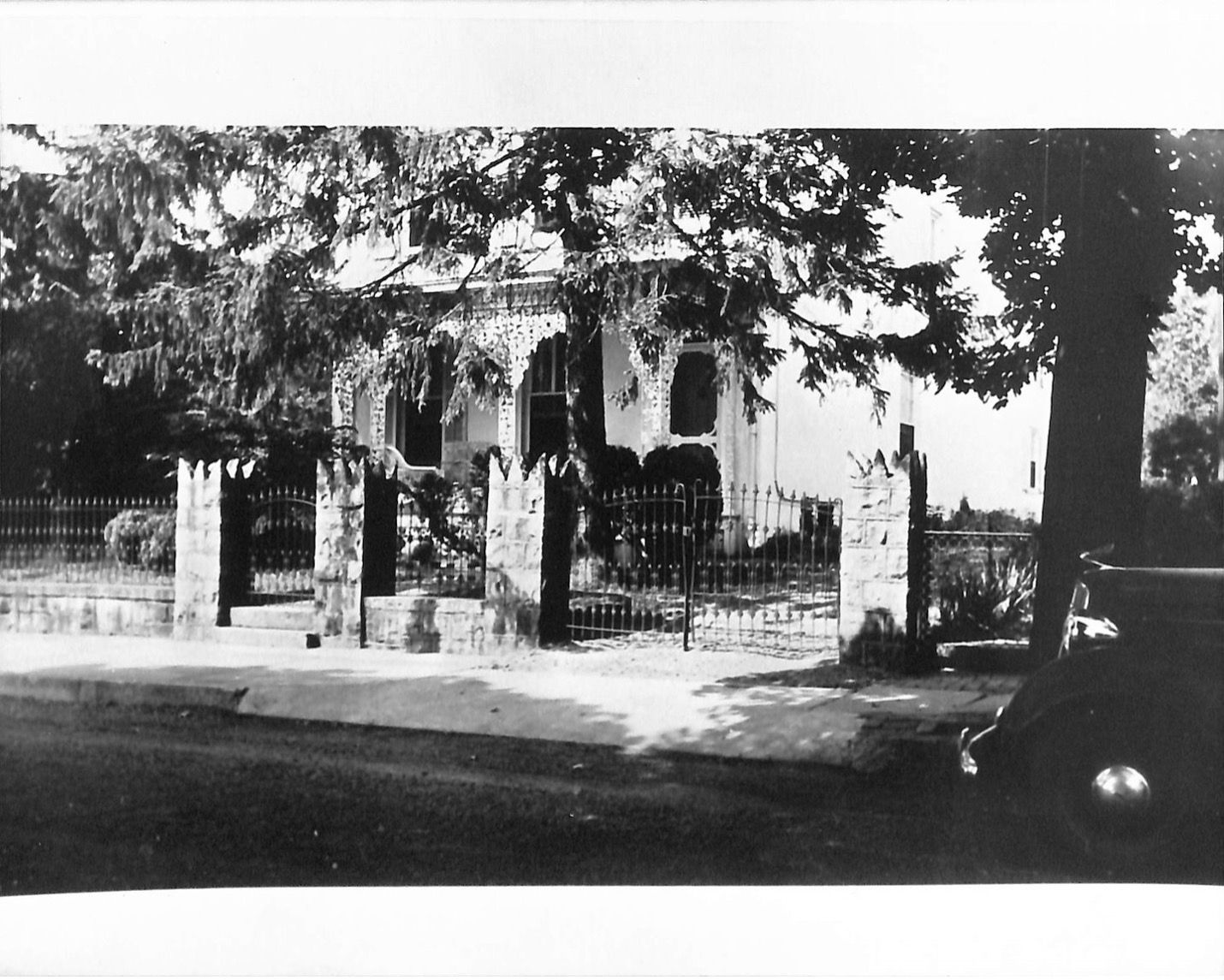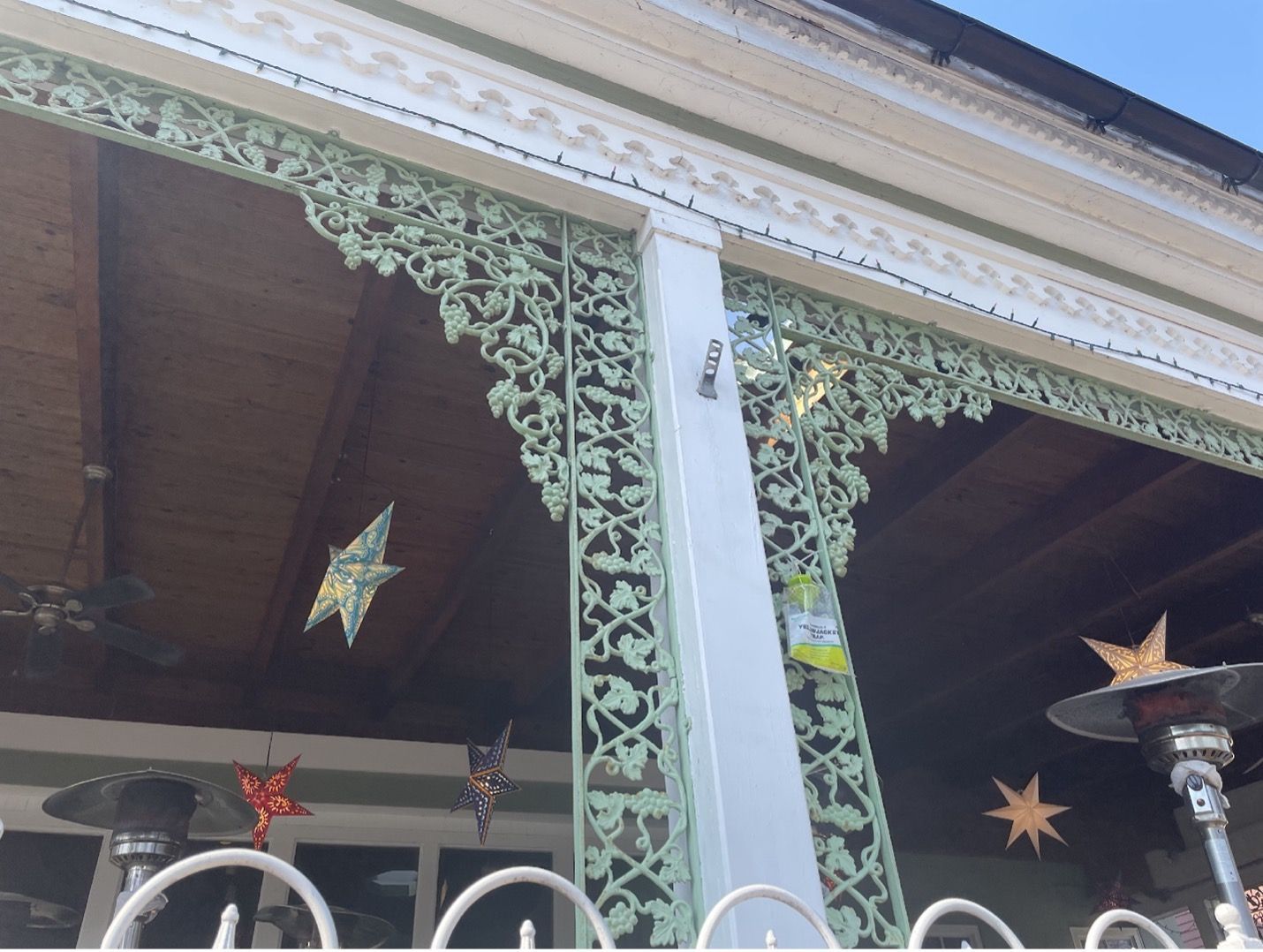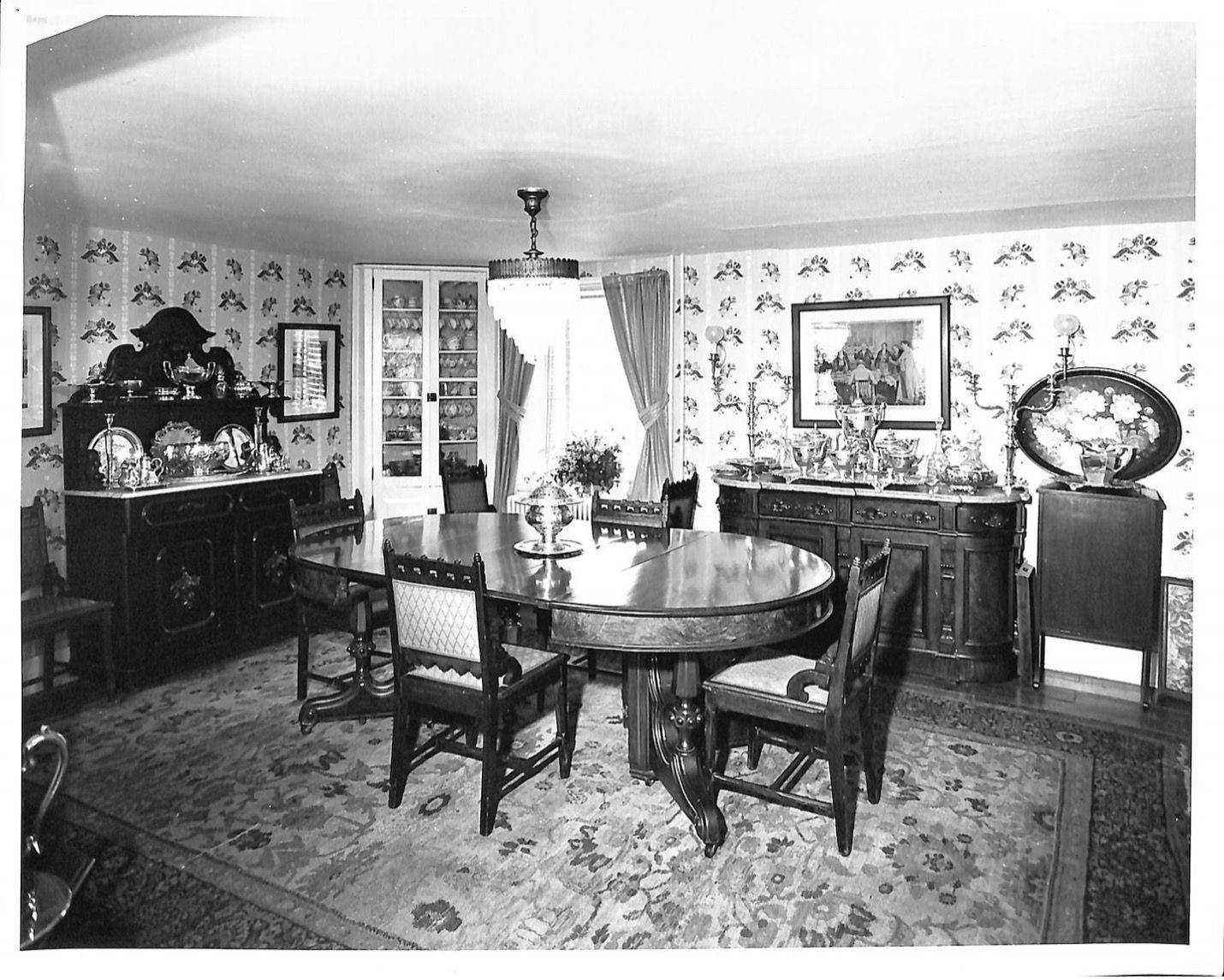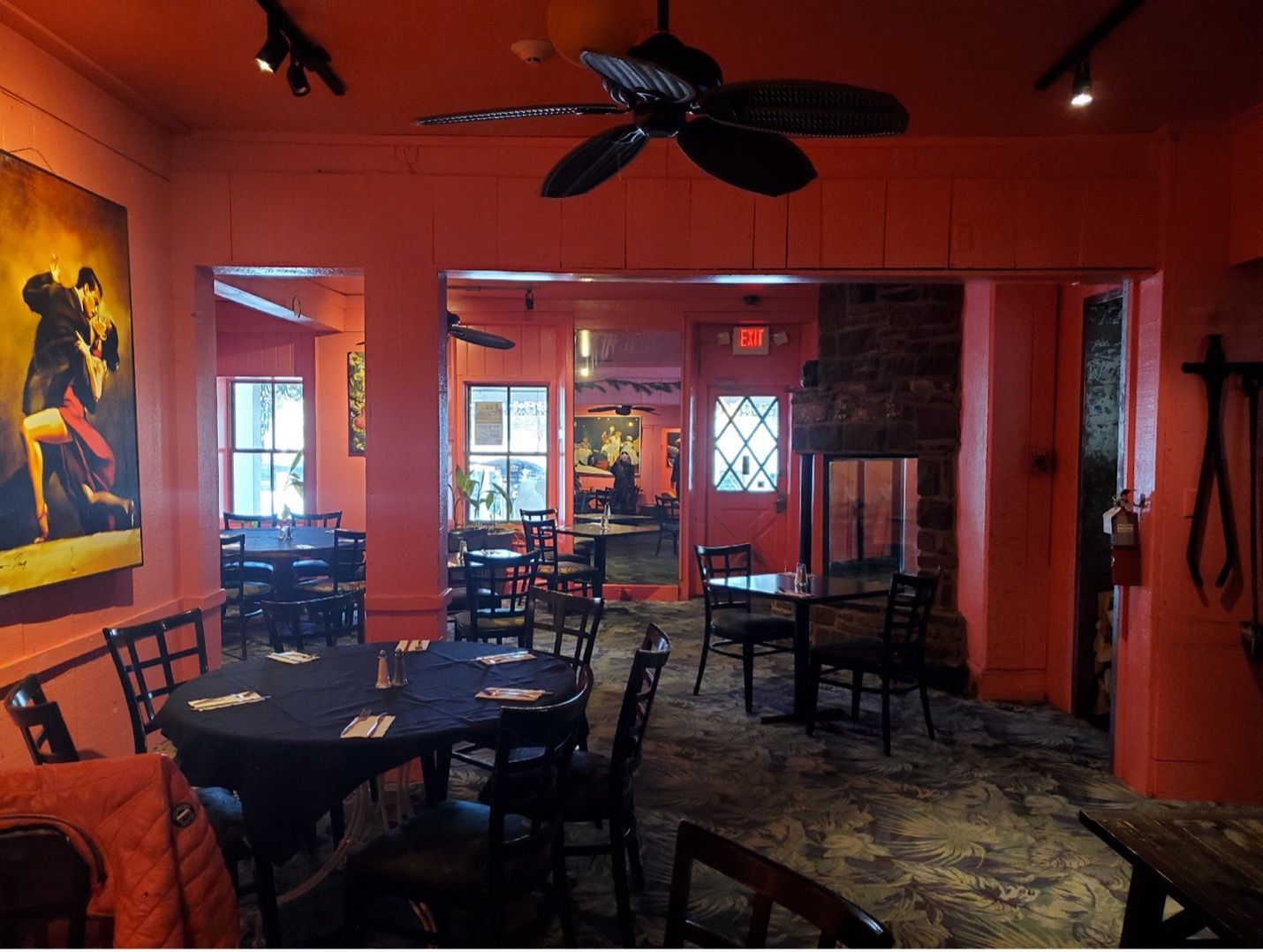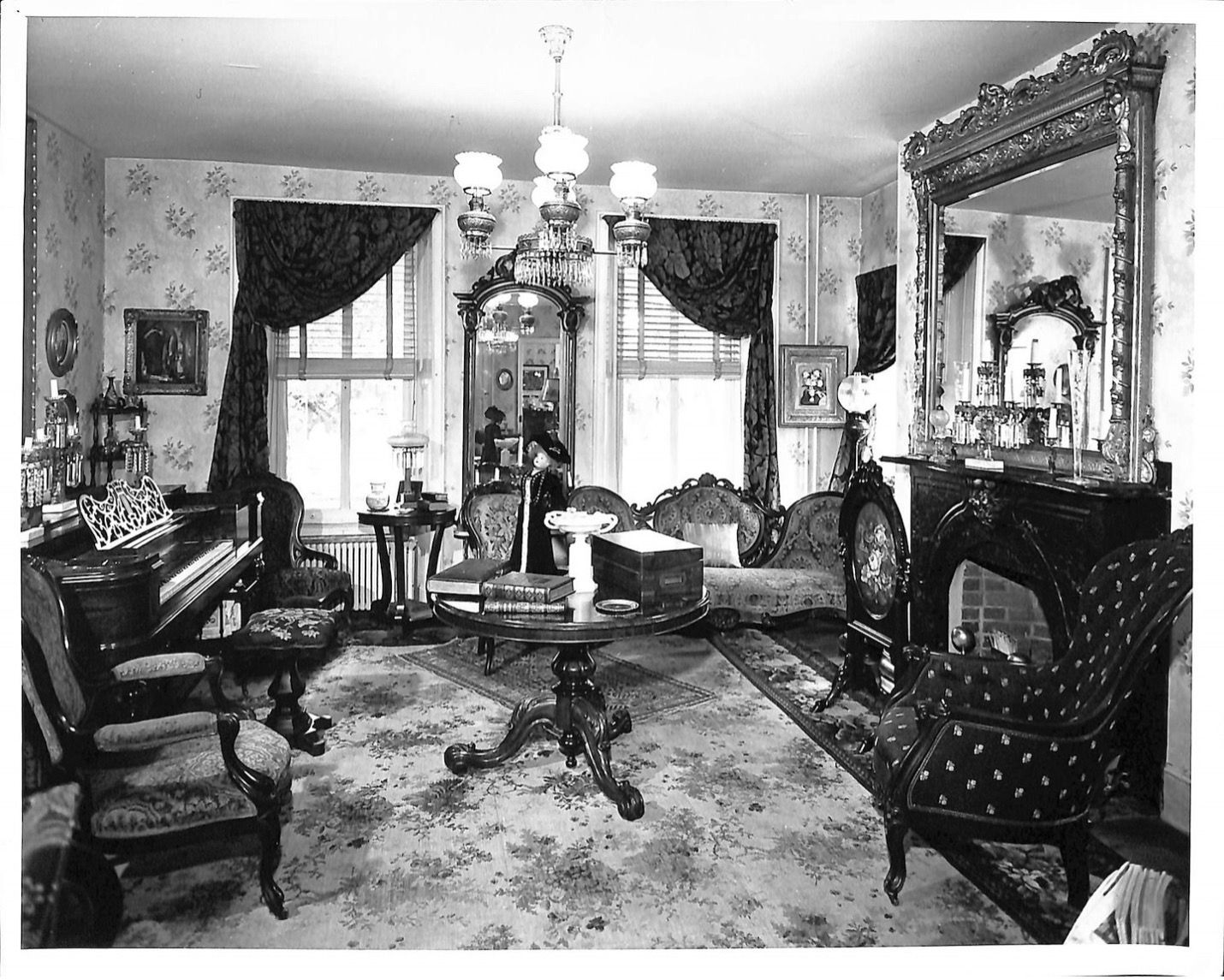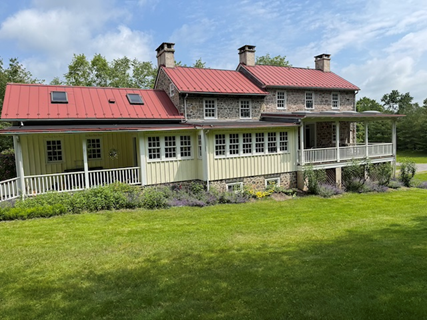The Coryell House (AKA, Havana)
A notable structure in New Hope with a most interesting history is located at 105 S. Main Street, now housing Havana restaurant, bar, and concert venue. This location is said to have been the home of John Coryell (1730-1799) in the mid 1700’s. John was the son of early ferry operator Emmanuel Coryell who died in 1748 and willed the New Jersey side of the ferry to his son, Abraham. In 1764 Abraham’s brother John Coryell bought the ferry rights on the Pennsylvania side of the Delaware River from John Wells. At the time of the American Revolution, both sides of the river were known as Coryell’s Ferry.
New Hope Historical Society (NHHS) Beyond the Door volunteers recently met with Havana owner, Mark Stevens, who provided a tour and information on the recent history of the property. A review of records in the NHHS archives provided additional relevant insight, as did literature including A Hot Bed of Secession: New Hope and the Civil War by Joseph F. DiPaolo, and History of Bucks County by William Watts Hart Davis.
The portion of the building that is to the rear or west of the structure underwent some construction in recent years and Mr. Stevens reports that wooden pegs serving as nails were discovered there. That is suggestive that this is an older section, perhaps dating to the days of John Coryell. When viewing the structure from the street, the part of the building that rises three stories on the northern end was likely built in the mid-1830s by Daniel Parry, younger brother of the mill owner Benjamin Parry, known as "the father of New Hope". It was then purchased by Lewis Slate Coryell (1788-1865), grandson of John Coryell.
Lewis Slate Coryell is a very interesting character in the history of New Hope. He was born In Coryell’s Ferry (later Lambertville), NJ in 1788. NHHS archive records show he was involved in building and owning multiple New Hope properties. In addition, with Joseph Murray, Coryell had a lumber mill and was involved in the local construction of the Delaware Canal. Interestingly the canal ran through the rear of his property on Main Street making him potentially a beneficiary of canal-related funds as both a contractor and landowner.
In the above-mentioned book by Joseph DiPaolo, the author notes that New Hope was “solidly democratic” in the 1860 presidential election casting only 87 of 213 votes for Abraham Lincoln. During the war, Lewis Slate Coryell was one of the Northern democrats who were not sympathetic to the Union’s prosecution of the Civil War. Coryell was twice elected to one-year terms as burgess (mayor) of New Hope during the war. When the governor of Pennsylvania called for militia recruits at the time of the threatened incursion of Lee’s troops into Gettysburg, Coryell is quoted in the local press as telling his townsmen to stay home and tend to their crops. At his last New Hope council meeting on March 3, 1864, minutes reflect he said that the war “…has assumed gigantic proportions and has afforded the administration pretext to assume for military necessity despotic rule to deprive our citizens of the benefit of our common inheritance in the constitution and protection of the laws…”
In the home of Lewis Slate Coryell, we find multiple period architectural elements. There are third-floor dormers, and windows are mullioned sash with small glass panes. Original front parlor floor-length windows are still evident from inside the north end of the restaurant seating area (see photos below). In addition, original molding can be seen. Recent interior modifications expanded first-floor fireplaces while incorporating their authentic stones in the expansions.
At a landing between the 2nd and 3rd floors is access to a “secret room” that legend says may have served as a hiding spot on the underground railroad. Additional legend asserts that Coryell family friend Aaron Burr hid there after his duel with Alexander Hamilton, though at this point there is no known documentation of that other than modern-day media articles. Moreover, John Coryell died in 1799, while the Burr-Hamilton duel was in 1804. Our records do not reflect who owned the property in 1804 (perhaps Daniel Parry), but Lewis Coryell did not acquire the property until 1834 and would have been only 16 in 1804 at the time of the Burr-Hamilton duel.
Third-floor space dating to the 1830s is used as a dressing room for the Havana entertainers that have included Ray Davies of The Kinks, Dr. John, Rick Derringer, Blues Traveler, Eddie Money, Steve Forbert, Denny Laine of Wings, Robby Krieger of The Doors, and dozens of others. Signatures of multiple performers are covering the walls and ceiling of the dressing room.
What was created as a residence underwent multiple modifications including modern additions to the south and west and change to commercial use in the late 1970s. Havana opened in 1978, and at various points, parts of the property were also occupied by a clothing store, a hairdresser, residential apartments, and a dentist's office. Today the entire property is occupied by Havana.
This business has passed through the hands of several owners, with Mark Stevens arriving as a barback in 1993. He became part owner in 2002 and full owner in 2008. A founder of Havana, Joe Luccaro, remains locally active and is now an owner of the 1740 House and HollyHedge Estate. One server, Greg Lane, has worked for Havana since 1979-1980, and his boss Mark Stevens believes that may well make Greg the longest continuing working server in New Hope. Several other nearby New Hope venues opened within a few years of the founding of Havana, and approximately 50 years later all are still in operation today: Karla’s, John & Peter’s, and Fran’s.
Mark reports mysterious events have occurred making him believe the property may be haunted. Such events have included lights flipping on and off on their own, and multiple office phones ringing late at night, with no one on the line upon answering. No ghosts have yet been seen or heard.
NHHS archival photos show a streetside Highways of History sign calling attention to the Coryell House. That sign is no longer present and its whereabout is uncertain. Decorative grillwork that once framed the residence’s front porch has been incorporated and supplemented with matching grills around a more recent front porch-covered addition.
Remarkable interior photos from 1960 augment the NHHS archives for 105 South Main Street. During our visit with Mark Stevens, he reported details of wallpaper in those photos reflect wallpaper found under paneling during recent restaurant renovations. Mrs. Ethel Grange Neale lived there from the 1930s to the 1960s. Her home was decorated in Victorian splendor including family heirlooms.
Local resident and NHHS volunteer, David Newhart, recalls visiting there as a young child in the 1950s when most of South Main Street was still residential. Then Mrs. Neale would have been in her 80’s. David recalls formal gardens to the south of the home, while beyond those was the home of future NHHS member Francis Curley and family. In the photos below, note the front windows that still exist in the same location with the original framing in the restaurant today.
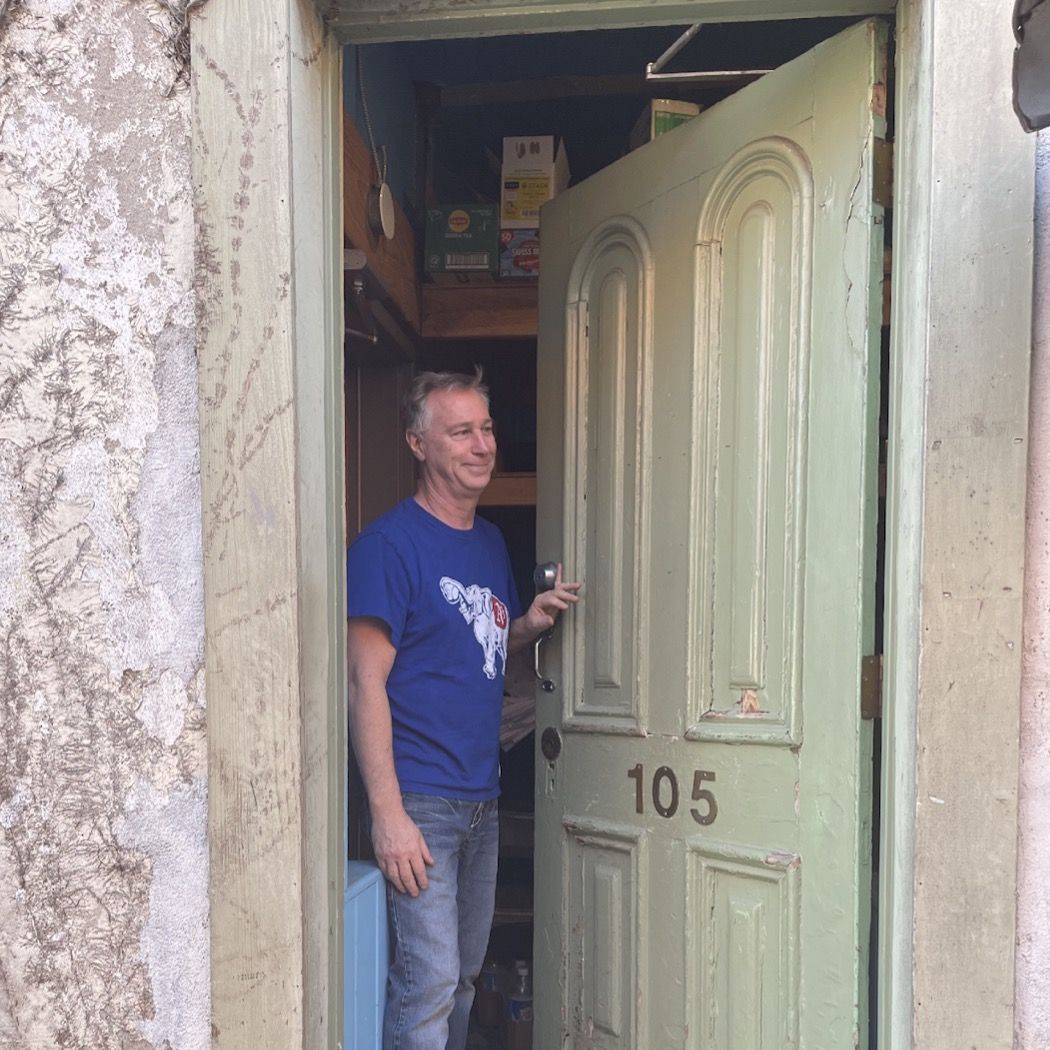
Many thanks to owner Mark Stevens for his generosity in sharing his historic property with us. Also, many thanks to NHHS historian, Roy Ziegler and Board Member Bobbi Cross and her husband, Jim, for their contributions and review of this article.
The members of the Archives Team involved in this project are Nicole Hudson, Archivist and the following volunteers:
Michelle Gunnells
Sandie Mines
Tom Lyon
Tom Williams
